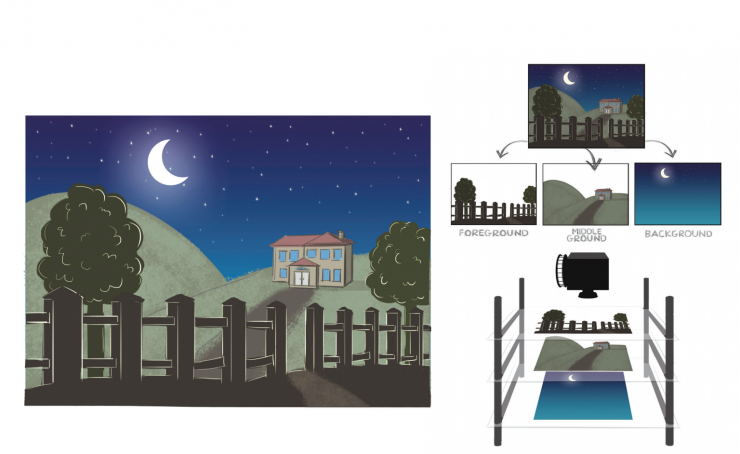In February 1957 Walt Disney recorded this video in which he talks about how the company made and used multi-plane cameras to create image segmentation in 2.5 dimensions and give depth to animated feature films.

Here’s the Wikipedia explanation for how the technology worked.
The multiplane camera is a motion-picture camera that was used in the traditional animation process that moves a number of pieces of artwork past the camera at various speeds and at various distances from one another. This creates a sense of parallaxor depth.
Various parts of the artwork layers are left transparent to allow other layers to be seen behind them. The movements are calculated and photographed frame by frame, with the result being an illusion of depth by having several layers of artwork moving at different speeds: the further away from the camera, the slower the speed. The multiplane effect is sometimes referred to as a parallax process.
One variation is to have the background and foreground move in opposite directions. This creates an effect of rotation. An early example is the scene in Walt Disney‘s Snow White and the Seven Dwarfs where the Evil Queen drinks her potion, and the surroundings appear to spin around her.
With thanks to Pinar Seyhan Demirdag for posting about this on Linkedin.
Mondatum is currently involved in automating the creation of depth maps to extract ‘2.5D’ images from 2D video content for display on glasses-free immersive screens. If you are interested in this area and would like to know more, please get in touch – contact@mondatum.com.


